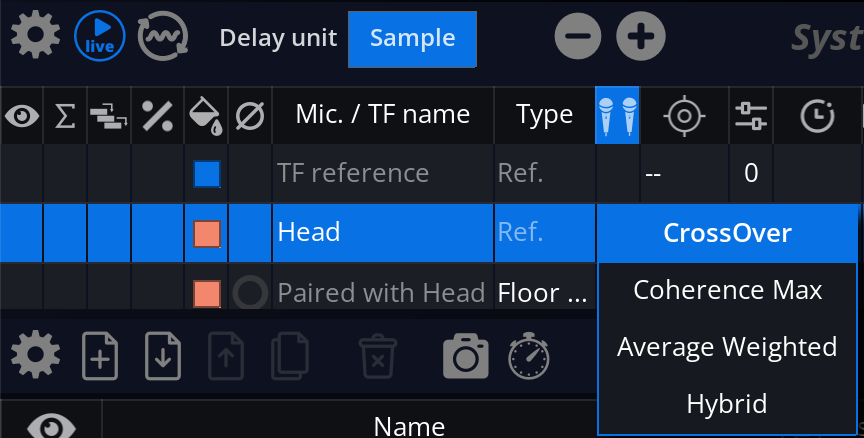Microphone Pairing
Overview
MiRA’s microphone pairing feature is an innovative method for optimizing audio system tuning by addressing low-frequency floor reflections that can distort measurements. It simplifies the measurement process by intelligently pairing microphones and combining their data in real time. This approach enhances accuracy and eliminates the need for extensive post-processing or additional DSP (Digital Signal Processing) hardware. As with all other MiRA system analysis features, pairing options can be revised offline after capturing all measurements.
Technical Description
Problem Statement
One common challenge when tuning a Public Address (PA) audio system is dealing with low-frequency reflections off the floor. These reflections can interfere with the direct sound, causing comb-filtering and leading to inaccurate measurements.
Traditional solutions involve conducting separate measurements with microphones placed on the floor and at head height, and then manually analyzing the acquired data separately. An alternative method employs two microphones equipped with FIR (Finite Impulse Response) filters (low-pass and high-pass) that are summed, necessitating additional expertise and equipment, and introducing latency. These techniques are laborious, time-consuming, and technically intricate.
MiRA Microphone Pairing Feature
The proposal solution uses a pair of microphones, one on the floor and one at head level. Both microphones are configured in MiRA software, which automatically combines data from the paired microphones. This eliminates the need for multiple captures and manual data merging, streamlining the workflow. Additionally, the software supports multiple microphone pairs for simultaneous multi-point measurements.
Despite being real-time measurement software, MiRA allows users to edit their measurements and captures. Users can modify alignment delays, microphone gains, calibrations, and other parameters even after the initial recording.
Workflow
To begin, connect the microphones and position one near the ground, whilst keeping another at hear level. In MiRA, each microphone is recognized as “Live (full band)” by default. Change the floor microphone type to “Live floor mic” and pair it with the head-level microphone.
MiRA captures data from both microphones simultaneously and automatically combines data from both microphones. Users can edit measurements after capture, adjust alignment delays, microphone gains, calibrations, and other parameters within MiRA. The result is a single transfer function curve for each microphone pair, with the impulse response corresponding to the head-level microphone.
For small venues or quick setups, using one pair of microphones, as described, simplifies the measurement process without additional complexity. For large venues requiring comprehensive coverage, deploying multiple microphone pairs at different locations allows simultaneous multipoint measurements, saving time.
Pairing algorithm
MiRA offers four different modes for microphone pairing.
The first one, called CrossOver, is a frequency-based approach. The floor microphone is used for frequencies below the crossover frequency, while the head microphone is used for frequencies above. The crossover frequency is user definable.
The Coherence Max algorithm selected the microphone with the greater coherence for each analysis band.
The Average Weighted algorithm combines the signals from the two microphones based on their coherence scores for each analysis band. The higher the coherence score, the more weight is given to that signal in the computations.
The final mode is ‘Hybrid’, which combines an Average Weighted magnitude curve and a Coherence Max computation for the phase and coherence curves.


